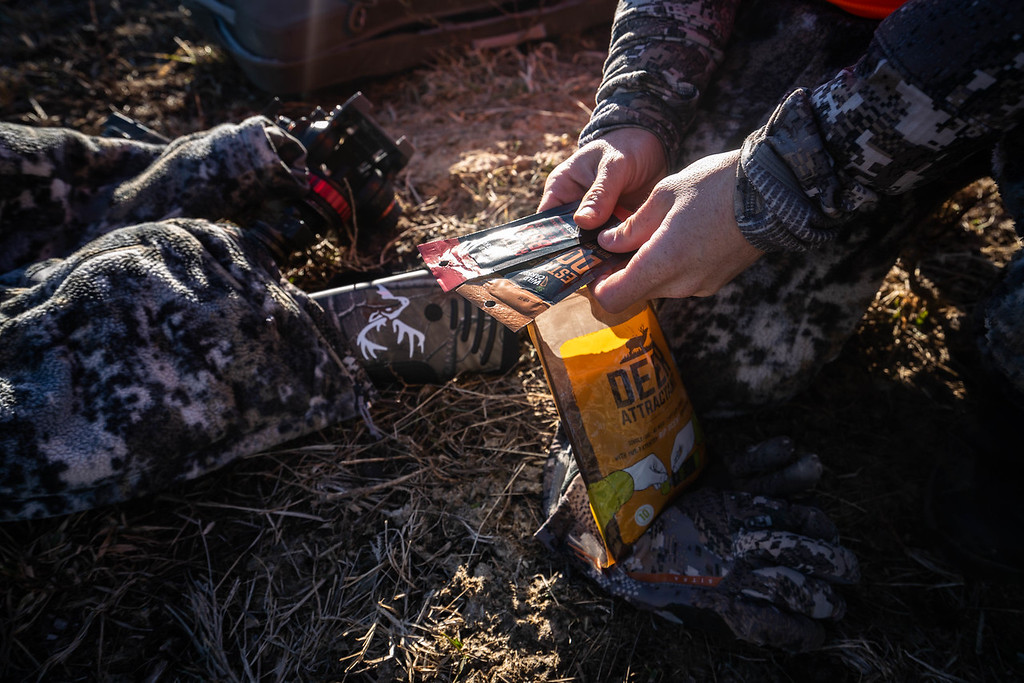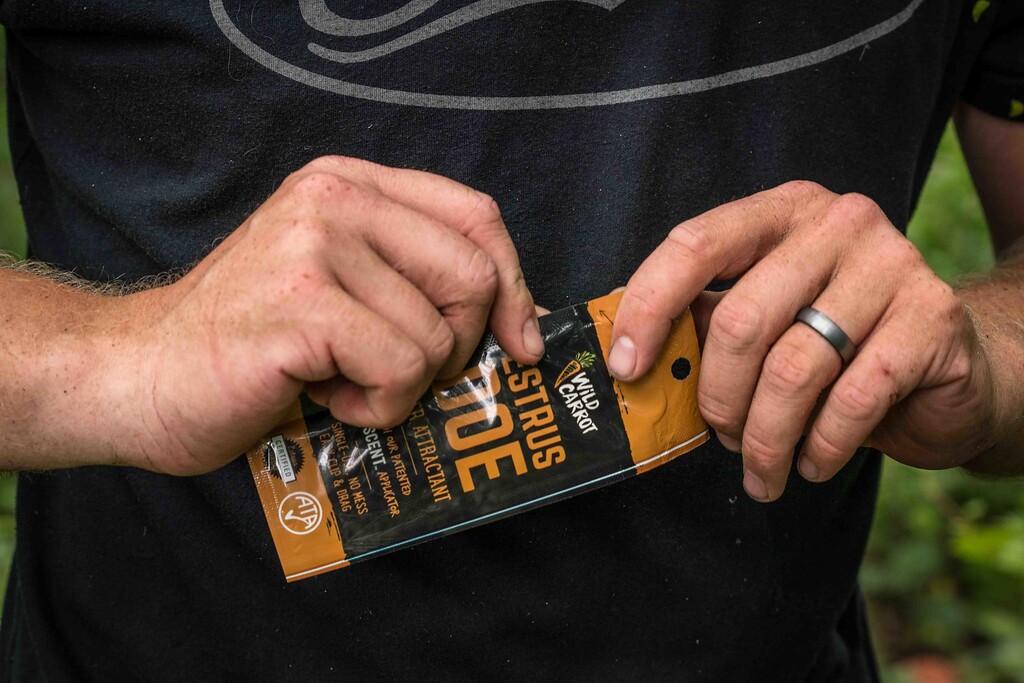How To Distinguish Between A Rub And A Scrape
written by Evan Anderson
“He made a scrape over there,” whispers Brennen Nading as he and Dylan Lenz eye a whitetail buck from a treestand in Iowa from the recent episode of Breaking Point S6:E6. This might throw some new hunters off because when he says scrape, they probably are picturing a rub. I certainly did when I was new to the hunting community. The terms “rub” and “scrape” get thrown around a lot and many of us new hunters may think they are interchangeable terms for the same thing. It’s an important distinction to make, however, because scrapes and rubs are totally different signs and are both extremely important to tracking deer. This episode has many examples of the two experts, Nading and Lenz, using these techniques. Here is a quick guide to help distinguish one from the other.
The Breaking Point
“Rub”
When a buck starts to grow his antlers early in the year, they will be covered in velvet. As the fall (and more importantly, the rut) draws closer, he will need to remove that velvet to expose the tougher bone layer underneath in order to better compete with other bucks for does. To do this, the buck will rub his antlers against a tree, creating a “rub”. You can see a large rub several times in this episode at the base of a tree near Bennen’s stand (04:58). Rubs are a good indication that bucks are in the area, but they aren’t necessarily signs of a buck marking his territory. A better indication for that would be a scrape.
The Breaking Point
“Scrape”
A scrape is a little harder for a new hunter to recognize depending on how exposed the forest floor is, but it’s crucial to learn in order to better track deer. A scrape is created when a buck scrapes the dirt with one of his hooves, exposing a sizeable patch of soil. He then will urinate on the scrape to leave his scent. This is how he will let does know that he is in the area and is “looking to mingle”. In addition to the dirt patch on the ground, there will usually be a tree branch hanging low over the scrape that the buck will lick, leaving more of his scent. Scrapes are important to be able to recognize because the buck will return to his scrapes to see if a doe has accepted his invite. If a doe is interested in mating, she will urinate on the scrape as well, leaving her scent for him to follow. In this episode, Dylan and Brennen can be seen putting up cameras around natural and manmade scrapes to monitor what kind of activity they’re getting.
@ Black Stamp Media 2019
In addition to hunting over natural scrapes, you can also create your own scrapes to try and lure in a buck. You can see Brennen and Dylan doing this at the start of the episode (01:48 - 01:52) and setting up a camera to capture any bucks that come by. To create a scrape, simply take a hand rake (sometimes called a hand cultivator) and disturb a sizeable patch of dirt, exposing the soil underneath. Once you’ve created this patch, you’re going to need some form of deer attractant to put into the scrape. Wild Carrot Scents makes a great estrus doe scent from real doe urine that is great for using in these self-made scrapes. Dylan and Brennen have used Wild Carrot in several successful episodes, including this one.
Remember when choosing where to put your scrape to pick a spot at the base of a tree with a low hanging branch where you can hang an attractant in addition to rubbing some in the dirt patch below.
Now that you can distinguish between the two, check out the full episode here and see if you can identify any rubs and scrapes as Brennen and Dylan hunt over them in S6:E6 of “The Breaking Point”
To learn from real-life examples, watch these guys in action on The Breaking Point. Best of luck chasing on your next hunting adventure. Follow us on social for awesome hunting content, @waypointtv.hunting and be sure to tag us in your photos! #FindYourWay
















